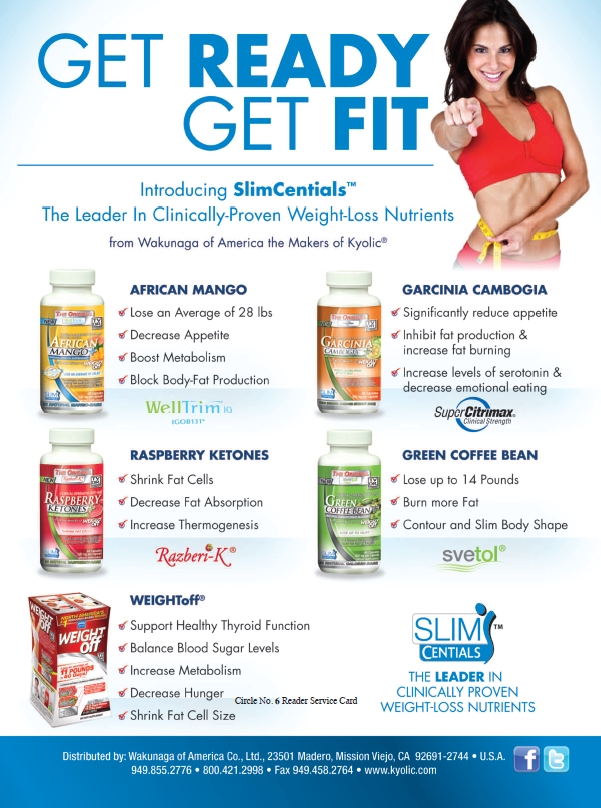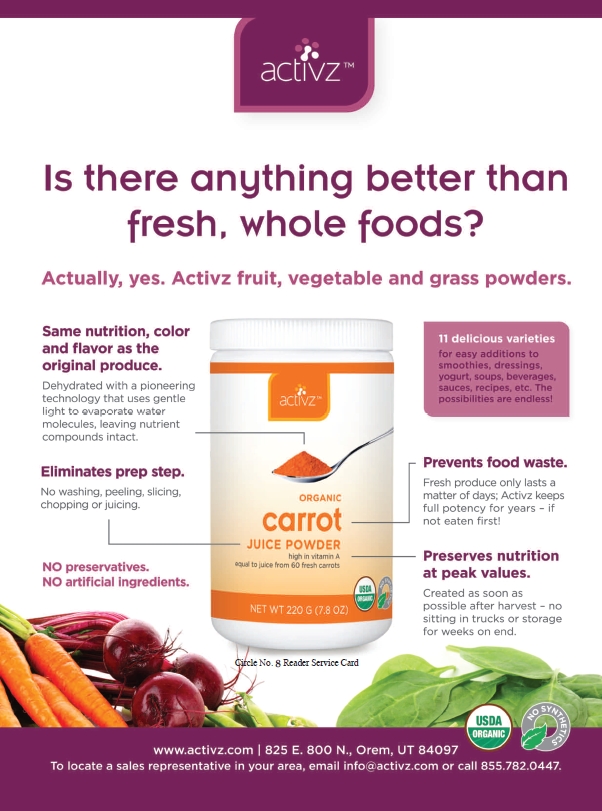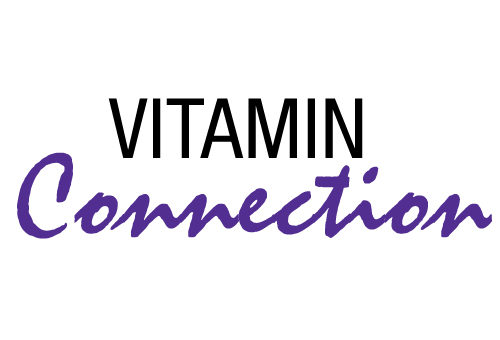Through the years, there have been many clinical studies demonstrating a plethora of health benefits for Pycnogenol. So many, in fact, that since my first column on the antioxidant properties of Pycnogenol in 1991 (1), I have written six books about the (increasing) health benefits (2–7). Through the years, we have discussed Pycnogenol’s benefits on joints (8), the heart (9, 10), skin, (11), inflammation (12) and more. Now, we know better how Pycnogenol works to bring about these diverse health benefits. Without this understanding, physicians and nutritionists are skeptical about how a single dietary supplement can have so many health benefits. They usually dismiss such wide-ranging claims as “snake oil.” This month, I have asked Frank Schönlau, Ph.D., scientific director of Horphag Research (distributor of Pycnogenol), to discuss this exciting new research with us.
Dr. Schönlau earned degrees in chemistry (1991) and biochemistry (1995) from the University in Münster, Germany. He researched protein anti-cancer drugs in the framework of a European Community research program “Europe against Cancer.” At the Institute of Experimental Dermatology, University Clinics of Münster, Germany, Dr. Schönlau investigated chronic inflammatory processes, wound healing, vascular disorders and angiogenesis.
In 1999, Dr. Schönlau joined Horphag Research as director for scientific communication and is now scientific director. Horphag Research supplies Pycnogenol, the only standardized pine bark extract according to the U.S. Pharmacopeia, to companies that produce a variety of Pycnogenol-containing products. Dr. Schönlau has published scores of research articles in peer-reviewed international basic science and medical journals on the role and efficacy of Pycnogenol in various pathologies.
Passwater: Pycnogenol is unique in several ways, one of which is the amount of research that stands behind the ingredient. This was recently acknowledged when the American Botanical Council awarded Horphag Research its annual Varro E. Tyler Commercial Investment in Phytomedicinal Research Award. In my humble opinion, Horphag certainly deserves the award more than any other basic research company. I bet you and your research team especially appreciated the award, as I know that Professor Tyler was an inspiration to you. Congratulations.
Schönlau: Horphag Research invests over U.S. $1 million a year in research on Pycnogenol. The investment goes to universities that submit to us proposals for promising new targets, both for identifying new health benefits and for helping better understand Pycnogenol’s methods of action.
Passwater: As your research findings mount, mainstream nutritionists—and even media personalities including Dr. Mehmet Oz—are gradually becoming aware of Pycnogenol’s many health benefits. How many studies have been published at this time?
Schönlau: More than 300 scientific publications  involving more than 7,000 persons demonstrate that Pycnogenol provides a multitude of health benefits, such as for heart and circulation, youthful skin, flexible joints, blood glucose control, sports endurance, mental function and good vision, among others.
involving more than 7,000 persons demonstrate that Pycnogenol provides a multitude of health benefits, such as for heart and circulation, youthful skin, flexible joints, blood glucose control, sports endurance, mental function and good vision, among others.
Passwater: Your research is really uncovering some very interesting information. Recently, you elucidated an important mechanism through which the larger molecular flavonoids work to bring about many of the myriad health benefits of Pycnogenol. Pycnogenol is not a single nutrient, but a precise blend of nutrients extracted from the bark of the French maritime pine. The nutrients include consistent proportions of procyanidins, which are very large structures somewhat like “daisy-chained” flavonoids (epicatechin and catechin). Pycnogenol further bears several bioflavonoids and polyphenols.
Schönlau: To date, Pycnogenol has been shown to be effective for so many great health issues that it gets difficult to explain how this plant extract can exert such broad contributions to health. A recent study published in PLOS ONE, together with other similar studies from the same group in Germany, offers a fascinating view on what is going on in the body after a human has taken Pycnogenol orally (13).
First of all, the procyanidins in Pycnogenol (which contains a standardized portion of 70% of them) are not immediately bioavailable because these molecules are far too large for absorption. The large procyanidin molecules are broken down into smaller molecules (i.e., metabolites). Initially, the circumstance that metabolites developing from procyanidins represent the active principal was discovered through the analysis of urine from student volunteers who consumed massive quantities of Pycnogenol, up to five grams in a single serving (14).
Passwater: Is it simply a matter of the procyanidin molecules being too large for passage through the intestinal walls or is it more complex than that?
Schönlau: Currently, there is a rapidly growing understanding among researchers about the interaction of dietary flavonoids and the bacteria present in our colons. In principal, flavonoids inhibit the growth of microorganisms; for this reason, fruits and vegetables produce flavonoids simply to protect themselves. The microflora (i.e., bacteria) prevailing in our gut have adapted to metabolize the procyanidins because, in essence, they don’t “like” flavonoids. Polyphenols inhibit the growth of bacteria, and plants produce flavonoids as a rudimentary “immune system” to protect themselves from rotting.
After human consumption, flavonoids inhibit the growth of gut bacteria—unless some of them metabolize (or process) the flavonoids into smaller molecules that no longer affect bacteria. There exists a quite sophisticated ecosystem in our guts, and this is very much to our advantage.
An institute in Würzburg, Germany, led by Petra Högger Ph.D., has revealed the details on Pycnogenol’s bioavailability in healthy student “volunteers” (most of them being her students, which casts some question on their voluntary status). They consumed a Pycnogenol tablet and blood was drawn in regular intervals to identify the parent Pycnogenol molecule appearance as well as the metabolites developing from bacterial processing of procyanidins (15). Small-size flavonoids such as catechin and taxifolin appear in the blood within 20 minutes. The procyanidins never appear in the bloodstream; however, from four hours after consumption onward, more and more of the metabolites appear in the blood. Because the metabolite appears with small structural variations, we commonly use the plural “metabolites.”
Passwater: So, does something important happen to these procyanidin metabolites?
Schönlau: This group in Würzburg, Germany wondered why such extremely low quantities of the metabolites are found in blood. We are talking here about nanograms per mL blood. To give you an idea, this would be like a few grams distributed in an Olympic-size swimming pool. At such low concentrations, Pycnogenol metabolites are amazingly potent for improving cardiovascular health and also provide significant anti-inflammatory potency. Dr. Högger investigated whether the metabolites were bound to plasma proteins. Many pharmaceuticals are bound to albumin in the blood. While the monomers of Pycnogenol have an affinity to albumin, this is not the case for the metabolites (16).
 Then, it became apparent that the metabolites are largely accumulating in cells of the blood and blood vessels. The metabolites are largely pooling in endothelial cells, leukocytes and red blood cells (17). That explains why researchers only found such ridiculously low concentrations in the blood itself. The red and white blood cells, and also the endothelial cells that line the interior of all blood vessels, are packed with Pycnogenol metabolites. Researchers identified that internalization in leukocytes leads to anti-inflammatory processes.
Then, it became apparent that the metabolites are largely accumulating in cells of the blood and blood vessels. The metabolites are largely pooling in endothelial cells, leukocytes and red blood cells (17). That explains why researchers only found such ridiculously low concentrations in the blood itself. The red and white blood cells, and also the endothelial cells that line the interior of all blood vessels, are packed with Pycnogenol metabolites. Researchers identified that internalization in leukocytes leads to anti-inflammatory processes.
This finding is in agreement with a previous Italian study, also done with students, who took Pycnogenol for five days. Blood was drawn from students and the blood leukocytes were separated. The experiments showed that Pycnogenol consumption and, hence, the metabolites inhibited the generation of pro-inflammatory enzymes COX-2 (cyclooxygenase type-2) and 5-LOX (5-lipoxygenase) in white blood cells (18). The COX-2 enzymes produce prostaglandins in inflammation and are responsible for the pain. Remember the attempts to launch so-called COX-2–specific drugs? These very potent drugs controlled pain until it was discovered that the COX-2 enzyme plays important roles in other organs such as the kidney. Pycnogenol metabolites do not affect the activity of COX-2, but rather prevent their production during inflammatory situations.
There’s no doubt that the metabolites render white blood cells less pro-inflammatory. Decreased expression of COX-2 enzyme with Pycnogenol lowers the required COX-2 inhibitors (like ibuprofen) in pain-related pathologies. Pycnogenol, though, is no COX-2–specific inhibitor as it does not affect constitutively expressed COX-2. 5-LOX is responsible for the generation of leukotrienes, another pro-inflammatory species especially involved in asthma. We have done three studies showing that Pycnogenol improves breathing in people suffering from asthma and in all of them, lowered leukotrienes were found. This pharmacologic study from Italy helps us to understand why!
In the cells lining our blood vessels (i.e., endothelial cells), Pycnogenol metabolites aid in providing more nitric oxide, which relieves vascular constriction. This is the centerpiece of Pycnogenol’s contribution to a healthier cardiovascular system. When a blood vessel is more efficacious in locally relieving constrictions, blood pressure is improved, and oxygen and nutrient supply to organs is improved.
Passwater: Do the Pycnogenol metabolites have any other health benefit?
Schönlau: Well, you have been interested in the glucose transporters GLUT1 and GLUT4 for many decades. You and your readers may be pleased to know that the climax of this new research story is owed to the understanding of which mechanism is involved in taking up the metabolites from the bloodstream into endothelial cells and leukocytes.
It was exemplarily shown with red blood cells, which likewise accumulate the Pycnogenol metabolites, in a study published in PLOS ONE (13). The GLUT1 transporter does the job and computer modeling has shown that Pycnogenol metabolites have great structural similarity to vitamin C. The GLUT1 transporter is an insulin-independent gate through which glucose enters cells. Few cells in our body have the privilege of utilizing glucose permanently: all blood cells, endothelial cells and neurons.
When I went to university, we learned that red blood cells basically ship oxygen from the lungs to organs and carry back the waste carbon dioxide. In the meantime, it has been revealed that red blood cells do a lot more. They synthesize nitric oxide and thus contribute to releasing constriction of arteries. There is increasing evidence that transfusion of banked blood that has been stored for more than three weeks greatly affects a patient’s circulation. This finding was most recently shown by Robert Neuman and coworkers at Emory University Hospital. Furthermore, red blood cells are very active in taking up oxidized vitamin C via the GLUT1 transporter for reducing it, and returning active vitamin C into the bloodstream.
Interestingly, it is exactly this GLUT1 transporter that is only present in mammals that lost the ability to synthesize vitamin C during evolution. We’re in great company there with monkeys and hamsters. It is GLUT1 that pumps Pycnogenol metabolites into blood cells. The speculation here is that sometime during the history of mankind, the GLUT1 transporter developed to overcome the vitamin C shortage and use ascorbic acid with polyphenols. Obviously, polyphenols prolong the lifetime of dietary vitamin C in the body. The speculation now is whether the procyanidin metabolites coincidentally travel with the vitamin C or whether it developed because of mutual benefits. This question probably can never be answered. However, Dr. Albert Szent Györgyi, who won the Nobel Prize for the discovery of vitamin C actions, argued that vitamin C is best accompanied by a substance he boldly termed “vitamin P” at the time, because it appeared that plant polyphenols exert similar functions as vitamin C.
To get back to GLUT1, this transporter is present in leukocytes, erythrocytes, endothelial cells and neuronal cells! The laboratory in Würzburg has in the meantime shown in an in vitro model with endothelial cells that Pycnogenol metabolites easily cross the blood–brain barrier. This isn’t published yet. Leukocytes likewise accumulate vast quantities of vitamin C and this is believed to coincide with better immunity, such as for preventing a common cold. In endothelial cells, the Pycnogenol metabolite obviously contributes to greater generation of nitric oxide. The group in Würzburg is working heavily on the mechanisms, which turn out to be more difficult than thought. Cell culture experiments are typically carried out with “immortalized” cell types, which means they are of cancer origin. While they generate nitric oxide, the regulatory mechanisms do not reflect “real” endothelial cells. Primary cultures, such as from umbilical veins, are difficult to get and to handle.
Another remaining major mystery is which contributions the metabolites offer to the physiology in erythrocytes. They found that Pycnogenol interacts with glutathione, which raises the hopes for the possibility that the metabolite may assist the recycling of spent vitamin C. Since I went to university a long time ago, we learned erythrocytes carry around oxygen and carbon dioxide, regulated by slight variations of the pH value. Today, it turns out that erythrocytes represent a serious source of nitric oxide, red blood cells that contribute to vasorelaxation! Here again, it is difficult for the lab to get totally fresh red blood cells for investigation of what the metabolite is doing to them.
Passwater: Speaking of glucose transport, high blood glucose is a component of metabolic syndrome. Metabolic syndrome can significantly increase the risk of heart disease, stroke and type II diabetes. The American Heart Association (AHA) defines metabolic syndrome as the simultaneous presence of three of five risk factors, including central obesity (40+ inch waistline for men, 35+ inch waistline for women), low HDL (the so-called good) cholesterol, high blood pressure, high glucose (sugar) and high triglycerides (fat).
Schönlau: A clinical trial published in the January online issue of Phytotherapy Research found Pycnogenol to be effective in helping to reduce health risk factors associated with metabolic syndrome (19). Nearly 90% of study participants who supplemented a healthy diet and regular exercise with Pycnogenol showed significant improvement of all metabolic syndrome characteristics, including obesity and high blood pressure. This study found that Pycnogenol can aid people struggling with metabolic syndrome to control blood lipids, blood sugar and blood pressure. Results showed that those who supplemented healthy diet and moderate exercise with Pycnogenol were able to improve heart health and lose weight, reaching an almost normal body mass index (BMI). The study provides evidence that daily supplementation with Pycnogenol may offer a natural approach to help achieve healthy blood pressure, improved cholesterol and blood sugar levels and, ultimately, greater cardiovascular health.
The study, conducted at the Italian University of Chieti-Pescara, followed 130 subjects, ages 45–55 years old, who presented with all five risk factors of metabolic syndrome, as defined by the AHA. A controlled clinical trial was conducted and participants were given either placebo capsules or 50 mg of Pycnogenol three times daily. The results showed that risk factors of metabolic syndrome were all significantly improved at three months with supplementation of Pycnogenol, with further improvement at six months.
Those participants who supplemented with Pycnogenol were free of all five metabolic syndrome risk factors and were well within normal values within six months. More than half of subjects in the placebo group—those who did not take Pycnogenol—still presented with all five metabolic syndrome risk factors even after six months of diet and exercise.
Additionally, the study found that those patients who supplemented healthy diet and exercise with Pycnogenol achieved significant weight loss. Their waist circumference reached non-obese levels after three months (39 inches or less for men, 34 inches or less for women). In addition, their BMIs reached healthy values. Their BMI baseline average decreased from 26.7 to 25.1 kg/m2 after completion of the half-year trial.
Passwater: Well, the new research is not only interesting, but it is also important to so many people’s health. Let’s pause for now, and we’ll pick up next month with a discussion of the benefits of Pycnogenol for cardiovascular health. WF
Note: The references for Part One of this column will follow Part Two in the December issue.
Dr. Richard Passwater is the author of more than 45 books and 500 articles on nutrition. Dr. Passwater has been WholeFoods Magazine’s science editor and author of this column since 1984. More information is available on his Web site, www.drpasswater.com.
Published in WholeFoods Magazine, November 2013










